Shusterman’s Immigration Update July 2014
Volume Nineteen, Number Seven

Published by the Law Offices of Carl Shusterman, 600 Wilshire Blvd, Suite 1550, Los Angeles, California, 90017. Phone: (213) 623-4592 x0.
Subscribe to our E-Mail Newsletter, join the conversation on our Immigration Facebook Page, follow our Blog Posts and subscribe to our “How-To” Immigration Videos.
Barring some unanticipated development in Congress regarding immigration reform, we will not publish an issue of Shusterman’s Immigration Update in August.
Client Reviews

Life Saver
“After wasting thousands of dollars on other lawyers, Mr. Shusterman was life saver. I recommend him hands down!”
- Mukta Mohan, Buffalo, New York
Read More Reviews
Zoom Consultations Available!
Newsletter US Immigration Update July 2014
TABLE OF CONTENTS:
1. Supreme Court Rules Against Immigrant Families
2. DACA Renewals – Plus DACA to Green Card!
3. Shusterman’s Upcoming Immigration Seminars
4. Obtaining a Green Card as an Immediate Relative
5. Success Story: Appealing an Incorrect CSPA Age Calculation
6. Trivia Quiz: Immigrants in Technology
7. State Department Visa Bulletin for July 2014
8. Immigration Government Processing Times
9. Ask Mr. Shusterman: Free Immigration Advice on YouTube
10. Winner of Our June 2014 Trivia Quiz!
NEWS FLASHES:
-
- Asylum Interview Stand-by List – The Los Angeles Asylum Office has introduced an “Asylum Interview Stand-by List”, allowing asylum applicants to be interviewed on very short notice. This list is drawn upon when there are last-minute cancellations or applicants fail to appear. If called upon, applicants must be able to appear for an interview very shortly after being contacted – often the same day or with just a few days notice. Applicants may request to be placed on the interview stand-by list (email: losangelesasylum@uscis.dhs.gov) or speak in person to one of the Supervisory USCIS Assistants.
-
- CSPA Guidance – In an interim policy memorandum published on June 6, 2014, USCIS provides guidance regarding certain “extraordinary circumstances” for late filings for adjustment of status under the Child Status Protection Act (CPSA). Typically, the immigrant must have applied for permanent residence within one year of visa availability. Examples of extraordinary circumstances to allow late filings include serious illness, legal disability, and ineffective assistance of counsel.
-
- CW-1 Extension: USCIS Guidance – USCIS has released guidance on the Labor Department ‘s announcement of the 5-year extension of the CW-1 transitional worker program until December 31, 2019. This extension allows businesses in the Commonwealth of the Northern Mariana Islands to continue to hire CW-1 workers to meet their needs.
-
- Executive Action on Immigration – President Barack Obama, accepting defeat with regards to passing sweeping immigration legislation, states he will personally take on reform measures. He blames House Republicans for their lack of action on considering immigration bills and has hinted that he may take executive action regarding the deportation of young immigrants, a $2 billion investment to hire new immigration judges, and opening more detention facilities.
-
- Immigration Reform Dead in House – According to two leading house lawmakers, one Republican and one Democrat, efforts to repair the immigration system are done for the year. They credit this failure to persistent Tea Party opposition and the increasingly bad reputation of President Obama among Republicans.
-
- Medical Exam Validity Limited to 1 Year – As of June 1, USCIS began limiting the validity of immigration medical exams (Form I-693) to 1 year after submission. Applicants should continue to submit their medical exams within 1 year of having these exams done. Additionally, USCIS will no longer require this report to be filed with the initial adjustment of status application and applicants can wait to submit Form I-693 once USCIS has sent a request.
-
- New USCIS Director – On June 24, the Senate confirmed Leon Rodriguez as the Director of the USCIS. Rodriguez formerly served as the Director of the Office for Civil Rights at the Department of Health and Human Services.
-
- News Corp’s Rupert Murdoch Urges U.S. Immigration Reform – Murdoch argues that eliminating quotas on special visas will boost economic growth and innovation in the long term. More specifically, he states that this can be achieved by removing quotas on “H-1B” visas for highly-skilled foreign workers.
-
- Ombudsman’s Report 2014 – On June 27, 2014, USCIS Ombudsman Maria Odom published the 2014 Annual Ombudsman’s Report to Congress. In her message, she writes:“I recognize USCIS’s achievements in turning the legacy Immigration and Naturalization Service into the more agile and customer-oriented agency it is today. … Public engagement has become fundamental to the way USCIS conducts its work and is regularly part of developing new policy and initiatives. … However, challenges that USCIS customers face currently still mirror difficulties of decades past. … My office received approximately 6,100 requests for case assistance – one third more than we received in each of the two previous years. While I welcome the stakeholder recognition of our effectiveness at performing our statutory mission, I also believe this … underscores the need for USCIS to improve quality of adjudications and service delivery across all product lines.”
-
- Requesting Fees for Federal Court Under EAJA – Under the Equal Access to Justice Act (EAJA), litigants may be relieved of their legal fees if their case is successful in Federal Court. The American Immigration Council and National Immigration Project have published a revised practice advisory assessing the eligibility, statutory requirements, and other practical aspects of filing an EAJA fee application. The practice advisory also provides advice as to how to calculate fees.
-
- Unaccompanied Children Migrating from Central America – In response to the rising number of unaccompanied children crossing the US border, the White House has announced that the US government will be partnering with Central American governments to address the economic and security factors at the heart of this migration issue. The US plans to inject millions of dollars into schemes which aim to combat gang violence, strengthen citizen security, encourage economic development, and improve Central American states’ capacities to receive and reintegrate returned families and children.
- U Visa and VAWA Policy Changes – On June 15, USCIS released an interim policy memorandum providing guidance on new legislative changes to U visa programs and adjustment of status provisions under the Violence Against Women Reauthorization Act (VAWA) of 2013. The revised U visa provisions of VAWA refer to policies regarding new crimes and age-out protections. Comments on the memo will be accepted until August 8, 2014.
1. Supreme Court Rules Against Immigrant Families

As a result, tens of thousands of immigrant families will continue to be separated as parents and underaged children immigrate to the U.S. while sons and daughters who turned 21 years of age during the waiting process are forced to remain abroad, separated from their families.
We first brought the CSPA lawsuit in Federal Court in 2008 and were victorious in 2012 when the U.S. Court of Appeals for the 9th Circuit agreed with the 5th Circuit that the wording of the statute was unambiguous and that the government was unlawfully restricting who qualified for benefits under CSPA. Sadly, the Supreme Court overruled this decision. The majority of the Justices ruled that the automatic conversion clause is ambiguous and deferred to the highly-restrictive 2009 decision of the Board of Immigration Appeals (BIA) in Matter of Wang. The bottom line is that most children who have followed the rules and waited in line with their parents for a green card for years, or perhaps decades, will not be given any credit for the time that they stood in line.
We have explained in previous posts why we believe that the Board’s decision in Matter of Wang is unreasonable and should not be accorded deference. However, the decision of the Supreme Court cannot be appealed.
In brief, the Court held that the statute was ambiguous. It then deferred to Matter of Wang which restricts the persons who may benefit from CSPA’s automatic conversion clause to aged-out beneficiaries of 2A family-based petitions. These persons were already able to accomplish this through an INS regulation which predated CSPA.
The Court ruled that the sons and daughters of our plaintiffs who are beneficiaries of family-based 3rd and 4th preference visa petitions do not qualify for automatic conversion or even for retention of their priority dates.
On page 30 of the plurality opinion, the Court states:
This statement is clearly erroneous. The Western Hemisphere Saving Clause (WHSC), which was enacted in 1976, does exactly that. We referenced this clause on page 45 of our legal brief.
To illustrate how the WHSC works, imagine a woman from Mexico who gives birth to a son in the U.S. in 1974 and thereby obtains a priority date. Suppose that 40 years later, her sister becomes a citizen of the U.S. and sponsors her for a green card. Does she, and any after-acquired spouses and children, get to retain the 1974 priority date and go to the head of the line? The answer is clearly yes. The INS/USCIS has implemented this law in this way for almost 40 years without any major problems. So, whatever ambiguity the Court found in the “automatic conversion” clause should not affect the ability of the child beneficiary to “retain” his or her original priority date.
As the dissent points out, when the U.S. citizen sister of Norma Uy sponsored her and her family for green cards in 1981, Norma’s daughter Ruth was 2-years-old. However, after waiting in line with her parents for a green card for over 20 years, by the time that the family reached the front of the line, Ruth was over 21 years of age, too old to immigrate together with her family under Matter of Wang.
However, going to the back of the 2B line isn’t an option for many sons and daughters of immigrants.
Because of the numerical restrictions in this category, the length of the 2B line is 28.7 years for persons born in the Philippines and 115.5 years for persons born in Mexico. So, as a practical matter, not receiving credit for the time that they spent waiting in line together with their parents, prevents sons and daughters of immigrants from ever reuniting with their families in the United States.
Is this meager benefit what Congress intended when they passed the Child Status Protection Act in 2002? Not according to the bipartisan group of Senators who submitted an amicus brief to the Supreme Court disputing the government’s interpretation of the law.
Furthermore, what sense does it mean to subtract the time the visa petition was pending from all children of green card applicants, but apply the automatic conversion clause to only a small subset of children?
The petition for Norma Uy was approved the same day that it was filed. The reason that her daughter Ruth was over 21 years old when the priority date was reached is the 23-year waiting time for a sibling born in the Philippines.
Hypothetically, what if Norma had a sister who was sponsored on the same day, and the sister had a son born on the same day as Ruth? Suppose the government took 10 years to approve the petition. Under the Supreme Court’s decision, Ruth’s cousin would be able to subtract 10 years from his age when the priority date was reached, and unlike Ruth, he could immigrate with his family.
If the automatic conversion clause, unlike the subtraction clause, only protects a small subset of sons and daughters of immigrants as the Supreme Court ruled, whether children are able to immigrate together with their families is akin to playing roulette in Las Vegas. Purely a matter of luck!
Now that the Supreme Court has ruled against immigrant families in our CSPA lawsuit, Congressional action is necessary to restate in the most clear and unambiguous language possible the intent of CSPA’s automatic conversion clause. Family unity is supposed to be the bedrock of our nation’s immigration system.
2. DACA Renewals – Plus DACA to Green Card!

Since the summer of 2012, over 560,000 persons who entered the United States as children have obtained lawful status through the DACA program. However, later this year and next, their status is due to expire.
Renewal Process
They must begin by completing the newly-reissued form I-821D, Consideration for Deferred Action for Childhood Arrivals, plus form I-765 for a new EAD (along with paying a filing fee of $465) as well as the I-765 worksheet. They must also submit their fingerprints and photos. The DHS will conduct a background check.
In order to maintain eligibility for DACA, an applicant must:
- Not have departed the U.S. since August 15, 2012 unless they did so pursuant to a grant of “advance parole”;
- Not have been convicted of a felony, a significant misdemeanor or three or more misdemeanors; and
- Not pose a threat to national security or public safety.
There is no need for them to demonstrate that they are attending a school or university.
USCIS reminds applicants to submit their renewal applications at least 120 days before their current DACA application is due to expire. However, it may be prudent to do so 180 days before the expiry date.
From DACA to Green Card
Since many persons with DACA cards entered the U.S. “without inspection”, they have been told that it is impossible to become a lawful permanent resident of the U.S. because they did not enter the U.S. legally.
However, this is not necessarily true.
Persons with DACA card are eligible to apply for permission to travel (“advance parole”) outside the U.S. under the following circumstances:
- Humanitarian
- Employment
- Education
If you obtain advance parole to travel abroad, be aware that when you return to the U.S., your last admission to the U.S. is lawful.
Therefore, should you marry your U.S. citizen fiancé, you can immediately apply for a green card. The whole procedure takes place in the U.S. and is usually completed within a matter of months.
3. Shusterman’s Upcoming Immigration Law Seminars
-
- The Michigan Recruitment and Retention Network
Immigration Law Seminar
Lansing, Michigan
September 17, 2014
Topic: “International Physicians and U.S. Immigration Law: What Hospitals and Medical Groups Need to Know”
-
- Pincus Professional Education
Asylum, Detention, and Removal Seminar
Los Angeles Athletic Club
Los Angeles, CA
November 7, 2014
Topic: “Case Studies – Asylum and Cancellation of Removal”
-
- JacobsCLE
The American Immigration Law Informer
Los Angeles, CA
November 28, 2014
Topic: “Temporary Working Visas and Green Cards through Employment”
4. Obtaining a Green Card as an Immediate Relative
U.S. immigration laws promote family unity and allow U.S. citizens to petition for certain qualified relatives to come and live permanently in the United States. However, not all qualified relatives are created equal and “immediate relatives” are given preference over other family members.
Who are Immediate Relatives?
Eligible immediate relatives of U.S. citizens include spouses, unmarried children under the age of 21, and parents (if the petitioning U.S. citizen is over the age of 21).
Immediate relatives are not subject to numerical quotas like other family-based categories when applying for permanent residence because they are considered an immigration priority. As such, they are processed without having to wait for their priority date to become current.
Immediate relatives can obtain a green card whether they are inside or outside of the U.S. They need to follow different procedures depending on their location.
Getting a Green Card While Inside the U.S.
If the immediate relative entered the U.S. legally, they are eligible to apply for a green card while inside the United States. The petitioner files Form I-130, Petition for Alien Relative, and at the same time, the beneficiary submits Form I-485, Application to Adjust Status.
Even if the foreign beneficiary did not file the I-485 concurrently with the I-130, they can still file their I-485 application any time after the I-130 was filed, as long as the I-130 has not since been denied. Generally, they will need to submit a copy of the receipt notice of approval along with the I-485 to show that the I-130 is either pending or has been approved.
If the immediate relative was not lawfully admitted to the U.S., it is likely that they will need to immigrate from abroad (See below). If they have accumulated over 180 days of unlawful presence in the U.S., and they have qualifying relatives, they will need to obtain either an I-601A or an I-601 “extreme hardship” waiver.
Getting a Green Card While Outside the U.S.
If the immediate relative is currently outside the U.S., they can seek permanent residency through consular processing.
After the USCIS approves the I-130, they will send the file to the National Visa Center (NVC). The NVC will request the immediate relatives’ civil documents, immigrant visa applications, photos, affidavit of support from the petitioner, etc. After confirming that all of the documents are in order, the NVC will then forward them to the U.S. Embassy or Consulate that is closest to the immediate relative’s home abroad. The immediate relative will be interviewed abroad, and upon approval of their immigrant visa application, will be given six months to return to the U.S.
The immediate relative will officially become a permanent resident when they are admitted at a U.S. port of entry.
It is very important to note that U.S. citizen petitioners should file separate I-130s for each immediate relative as these forms are processed independently under this preference category.
Affidavits of Support
No matter which path is taken towards obtaining a green card for the immediate relative, the petitioner must submit an affidavit of support to show USCIS that they are financially able to support their relative. The affidavit of support is submitted with the application packet to the USCIS (if applying in the U.S.) or to the NVC (if applying via a U.S. Embassy or Consulate).
Per the 2013 Health and Human Service Poverty Guidelines (I-864P), a petitioner must have an income of at least $15,510 to sponsor one person (for a 2 member household). The income requirement depends upon the number of people in the household, so refer to the poverty guidelines for the exact income that is required in your situation.
Even if the U.S. petitioner does not meet the income requirement, there are other avenues available to them to meet the income requirement, such as:
- Submitting evidence of all liquid assets (Money Market CD, savings account, 401(k) statement, etc…)
- Submitting a second affidavit of support with evidence from a Cosponsor.
Cosponsors should note that by submitting an affidavit of support and supporting documents, they are informing USCIS that if the petitioner cannot financially support their immediate relative that they will step in to help prevent him/her from becoming a public charge.
5. Success Story: Appealing an Incorrect CSPA Age Calculation
This month’s success story is about our client Ashley. The U.S. Citizenship and Immigration Services (USCIS) initially denied her adjustment of status application, concluding that she was ineligible for adjustment as a derivative of her mother because she did not qualify as a “child” under the Child Status Protection Act (CSPA). The Immigration and Nationality Act defines a “child” as an individual who is unmarried and under the age of 21.
Ashley first came to the United States in 2002 as an E-2 dependent. In July of 2007, she applied for adjustment of status as a derivative of her mother’s employment-based immigrant visa petition. Ashley was 17 years old at that time. After the family filed their applications for adjustment of status, the priority dates for their preference category retrogressed severely. Many years later, in 2013, the priority date once again became available and the USCIS approved the adjustment of status applications of Ashley’s parents and younger sister. However, USCIS denied Ashley’s application. In its denial, the USCIS concluded that she could not adjust as a derivative of her mother because she was 22 years old and did not benefit from the CSPA.
The CSPA amended the Immigration and Nationality Act (INA) by changing who may qualify as a child for immigration purposes. Before the CSPA took effect in 2002, a beneficiary who turned 21 at any time prior to receiving permanent residence could not be considered a child for immigration purposes. This situation is described as “aging out.” Congress recognized that many beneficiaries were aging out because of the large backlogs and long processing times for visa petitions. The CSPA was designed to prevent many children from aging out.
For applicants in preference categories such as Ashley, the CSPA provides a formula for determining whether a beneficiary can remain a “child” for immigration purposes even after reaching the age of 21. First, determine the age of the beneficiary on the date that a visa becomes available. Then, subtract the number of days that the visa petition was pending with the USCIS. If the resulting age is under 21, she remains a child for immigration purposes. The final requirement for CSPA age-out protection is that the alien must seek to acquire permanent residence within one year of visa availability.
After Ashley received the denial of her adjustment of status application, she retained our law office for assistance in the matter. In its denial, the USCIS concluded that Ashley did not qualify as a child because she was 22 years old at the time the I-140 Petition for Alien Worker filed on behalf of her mother was approved. The USCIS’ calculation was based on the assumption that an immigrant visa became available on March 1, 2013.
Attorney Amy Prokop appealed, arguing that a correct application of the law to Ashley’s case clearly demonstrated that she qualified as a child under CSPA. She noted that Ashley was born on August 21, 1989. On January 3, 2007, an I-140 petition was filed on behalf of her mother. Ashley was a derivative beneficiary and was 17 years old at the time this petition was filed.
The I-140 petition was pending from January 3, 2007 until August 25, 2007. Thus on the date of petition approval, she was 18 years old. However, prior to approval of the petition, a visa became available on July 1, 2007. Ashley and the rest of her family applied for adjustment of status on July 31, 2007, when she was still 17 years old.
Attorney Prokop argued that the USCIS used the wrong starting point when calculating Ashley’s age. She noted that if the visa availability date regresses, and the person has already filed an application for adjustment of status, the relevant date for calculating her age is the date the visa number first becomes available. A visa number first became available to Ashley on July 1, 2007, when she was only 17 years old. Therefore, she qualifies as a child under CSPA and is eligible to adjust her status.
Our appeal was successful, and last month Ashley’s adjustment of status application was approved by the USCIS. We are so pleased that Ashley can remain in the United States.
6. Immigration Quiz
Quiz Removed
7. State Department Visa Bulletin for July 2014
The July 2014 Visa Bulletin brings some welcome news, particularly for those waiting in the employment-based (EB) categories who were born in India and the Philippines.Filipino EB-3 moves forward one year while India EB-3 inches forward by 2 weeks. However, worldwide and China EB-3 both fail to advance.
India EB-2 surges forward almost 4 years. Further advances are expected in August and September. China EB-2 advances 5 weeks while worldwide EB-2 remains current.
China EB-5 remains current although retrogression could occur in August or September.
The chart below tells the story in more detail:
EMPLOYMENT CATEGORIES
| Categories | Worldwide | China (PRC) | India | Mexico | Philippines |
|---|---|---|---|---|---|
| 1st | Current | Current | Current | Current | Current |
| 2nd | Current | 7-1-09 | 9-1-08 | Current | Current |
| 3rd | 4-1-11 | 10-1-06 | 11-1-03 | 4-1-11 | 1-1-09 |
| Unskilled | 4-1-11 | 1-1-03 | 11-1-03 | 4-1-11 | 1-1-09 |
| 4th | Current | Current | Current | Current | Current |
| Religious | Current | Current | Current | Current | Current |
| 5th | Current | Current | Current | Current | Current |
The worldwide 2A category (spouses and children of lawful permanent residents), after retrogressing 16 months in June, remains frozen in July. Do not expect any relief until October 2014 at the earliest.
Most of the other worldwide categories as well as the family-based categories for Mexico and the Philippines advance slowly, from 1 to 4 weeks.
There are, however, a few bright spots: (1) Philippines 1st (unmarried adult sons and daughters of U.S. citizens) which advanced 4 months in June, springs ahead another 7 months in July while Philippines 4th (brothers and sisters of U.S. citizens) advances 6 weeks; and (2) Mexico 2B (unmarried adult sons and daughters of permanent residents) which advanced 10 weeks in June moves ahead another 11 weeks in July while Mexico 1st advances 6 weeks in July.
The chart below tells the story in more detail:
FAMILY CATEGORIES
| Categories | Worldwide | China (PRC) | Mexico | Philippines |
|---|---|---|---|---|
| 1st | 4-1-07 | 4-1-07 | 2-1-94 | 1-1-03 |
| 2A | 5-1-12 | 5-1-12 | 3-15-11 | 5-1-12 |
| 2B | 5-1-07 | 5-1-07 | 11-22-93 | 8-15-03 |
| 3rd | 10-15-03 | 10-15-03 | 8-8-93 | 3-22-93 |
| 4th | 12-22-01 | 12-22-01 | 12-15-96 | 1-1-91 |
8. Immigration Government Processing Times

9. Ask Mr. Shusterman: Free Immigration Advice on YouTube
This past month, another of our How-To Immigration videos, “How to Become a U.S. Citizen (Part One)” exceeded 100,000 views. A few months ago, our video “How to Obtain a Green Card Through Marriage” went over 200,000 views.
All together, we have produced over 50 immigration videos. Most are in English, some in Spanish and a couple are in Chinese and Korean. These videos are a great source of free immigration information, and have been viewed about 650,000 times.
While I’m sure that Lady Gaga has no reason to be jealous, we are very pleased to see so many people becoming informed about how to get a temporary working visa, a green card, U.S. citizenship, win their case in Immigration Court and much more.
We will be producing some additional videos in July, so take advantage of this free service by subscribing to our videos.
We link to each of our immigration videos below:
- Attorney Shusterman’s Senate Testimony
- Attorney Shusterman’s 9th Circuit Oral Argument
- How to Become a U.S. Citizen (Part 1)
- How to Become a U.S. Citizen (Part 2)
- How to Obtain Citizenship Through Your Parents and Grandparents
- How to Obtain a Green Card Through Marriage
- Emigrar por Matrimonio a un Ciudadano Americano (Spanish)
- 美國結婚移民 (Mandarin Chinese)
- 결혼을통한영주권취득 (Korean)
- I-751 Waiver Where a Marriage Ends in Divorce
- Green Cards for Family Members
- Family Preference Categories: An Introduction
- Family-Based Immigration: Speeding up Your Case
- Understanding The Visa Bulletin: Family-Based Categories
- H-1B Temporary Work Visa
- Green Cards Through Employment
- Employment-Based Immigration: An Overview
- Understanding The Visa Bulletin: Employment-Based Categories
- Adjustment of Status
- Adjustment of Status Thru Section 245(i)
- CSPA Case Heads to the Supreme Court
- How the Child Status Protection Act Can Help You (Part 1)
- How the Child Status Protection Act Can Help You (Part 2)
- Unlawful Presence Bars and Waivers
- I-601A Provisional Waiver
- Winning Your Case in Immigration Court
- Cancellation of Removal for Non-Permanent Residents
- Asylum: Winning Your Case
- Canadian Orphan Gains Permission to Join Family in the U.S.
- Honor Student Beats Deportation
- How to Survive an I-9 Audit (Part I)
- How to Survive an I-9 Audit (Part II)
- Physician Immigration: A Step-by-Step Guide
- J Status for IMGs: The Consequences
- J Waiver Requirements and O-1 Visas
- Conrad 30 Waivers for Physicians
- Federal Interested Government Agency (IGA) Waivers
- Hardship and Persecution Waivers
- Permanent Residence Using PERM and/or NIWs
- Permanent Residence Other Than Through Employment
- Deferred Action: What You Need to Know
- Comprehensive Immigration Reform in 2009?
10. Winner of our June 2014 Immigration Trivia Quiz!
Quiz Removed
Below is the message we received from the winner:
Dear Mr. Shusterman, Below are my answers to your June Immigration Trivia Quiz:
1. Anna Paquin – July 24, 1982, Canada, 1994, Piano
2. Charlize Theron – August 7, 1975, South Africa, 2003, Monster
3. Natalie Portman – June 9, 1981, Israel, 2011, Black Swan
4. Penelope Cruz – April 28, 1974, Spain, 2008, Vicky Cristina
Barcelona I’m Alicia, green card holder, live here in Mesa AZ. Stay-home wife. I search the answers through wikipedia….Been a subscriber for more than 5 years now.”
Congratulations, Alicia! I look forward to helping you!
Carl Shusterman
Certified Specialist in Immigration Law, State Bar of California
Former Immigration and Naturalization Service (INS) Attorney (1976-82)
Served as Member of AILA Board of Governors (1988-97)
Law Offices of Carl Shusterman, 600 Wilshire Blvd., Suite 1550 Los Angeles, CA 90017
Phone: (213) 623-4592 x0, Fax: (213) 623-3720
“We think the chances of immigration reform moving in this Congress are virtually nil and the next chance we’ll have to revisit this issue will be in 2017.”
– Frank Sherry Executive Director, America’s Voice
Newsletter US Immigration Update July 2014 – Quick Links
About Us
Back Issues of Our Newsletter
Citizenship
Client Testimonials
Forms Download
Green Cards
Job Search
PERM
Processing Times
Schedule a Legal Consultation
Subscribe to Our Newsletter
Success Stories
Temporary Visas
Visa Bulletin
July 1, 2014
Disclaimer: This newsletter is not intended to establish an attorney-client relationship. All information contained in this newsletter is generalized. Any reliance on information contained herein is taken at your own risk.







